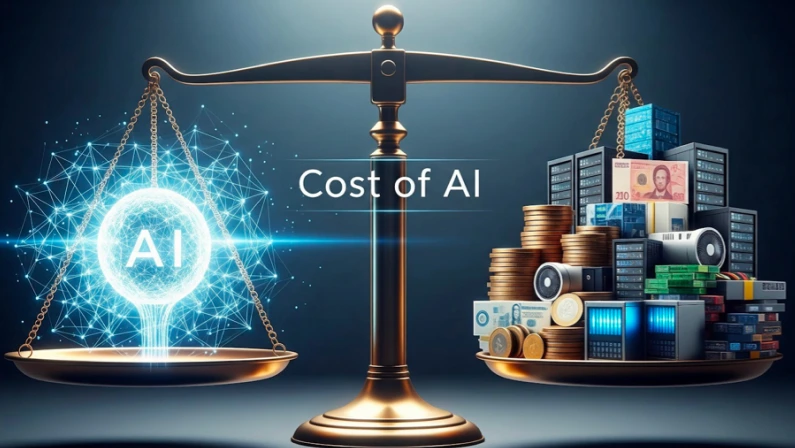
Customer data is everywhere — from website analytics and CRM systems to email platforms and support tickets. Businesses are collecting more information than ever before, but without a strategy to bring it all together, that data often sits in silos. Using AI to consolidate customer data streams allows organizations to create a unified customer profile that powers smarter decisions, personalized experiences, and stronger compliance.
What Are Customer Data Streams and Why Are They Fragmented?
Customer data streams refer to all the sources through which a company gathers information about its customers. These include transactional systems, email platforms, websites, support tools, loyalty programs, social media, and more. Each of these systems typically captures data independently, using different formats, identifiers, and structures.
The result is a fragmented view of your customers. Without a centralized way to integrate these touchpoints, businesses often struggle with inconsistencies, duplication, and data that lacks context. This fragmentation not only slows down decision-making but also makes it harder to comply with privacy regulations and deliver relevant customer experiences.
How Does AI Help in Consolidating Customer Data?

Artificial intelligence plays a critical role in customer data consolidation by automating the unification of records from multiple sources. AI in data integration uses algorithms to detect patterns, match customer identifiers across systems, and standardize entries.
Machine learning for data management can improve over time, refining how it resolves duplicate records, fills in missing fields, and organizes information into a cohesive profile. Instead of manually combing through spreadsheets and databases, AI lets businesses streamline the process of building unified customer profiles at scale.
What Are the Key Benefits of AI-Based Data Consolidation?
AI-powered customer data consolidation brings clear advantages across the board. From cutting manual workload to improving personalization, businesses that invest in this kind of integration can move faster, respond smarter, and operate with better confidence.
Less Time Spent on Manual Data Work
One of the first things businesses notice is how much time they save. Instead of pulling reports from different systems or manually comparing spreadsheets, teams can rely on AI to gather, clean, and align data in the background. This shift allows marketers, analysts, and leadership to focus on strategic work instead of data prep.
Smarter, More Reliable Insights
When customer data streams are unified through AI, the resulting insights are far more accurate. AI customer insights are based on a full view of each customer rather than fragmented touchpoints. This leads to better audience segmentation, more effective targeting, and improved forecasting.
Stronger Multi-Source Data Integration
AI makes it possible to link data from CRMs, support platforms, marketing tools, and transactional systems without relying solely on manual mapping or custom development. As a result, businesses gain a single, consolidated dataset that evolves in real time—something traditional integration methods often struggle to maintain.
Better Customer Experiences Across Teams
With a unified customer profile in place, sales, support, and marketing teams are able to act in sync. AI helps ensure that messaging, follow-ups, and service are consistent across departments, reducing confusion and improving the customer experience.
Improved Data Governance and Compliance
Data privacy regulations continue to tighten, and having a centralized system helps businesses stay in line. AI can automatically identify missing consent, data duplication, or retention issues, giving compliance teams a proactive way to manage risk. Cleaner, well-structured data also makes audits and reporting much easier.
Which AI Tools and Technologies Are Commonly Used?
Several technologies support AI-based data integration and consolidation. Natural language processing (NLP) can extract and classify customer interactions from emails or support tickets. Machine learning models identify relationships between datasets and automatically merge them. Identity resolution tools help map different records to the same individual.
Leapify CRM combines these capabilities into a single platform that enables intelligent data consolidation and AI-driven customer engagement. It not only unifies data but also enhances it with predictive insights that help businesses make informed decisions faster. Learn more about Leapify’s approach to unified data management and how it supports AI-driven data layers.
How Can Businesses Ensure Data Accuracy and Integrity?

Bringing together customer data from multiple systems is valuable, but it only works if the information stays accurate, consistent, and trustworthy. Poor data quality leads to wasted resources and missed opportunities. That’s why ensuring accuracy and integrity during consolidation is a top priority.
Combine the Strengths of AI and Human Oversight
AI plays a major role in cleaning and organizing large data sets, but it’s not a complete substitute for human judgment. Teams should establish clear rules for how customer identities are matched across systems. For example, what level of similarity between names and emails is acceptable for a match? Setting these thresholds helps avoid inaccurate merges or duplicates that could harm the quality of your unified customer profile.
Validate Critical Data Points Regularly
Some data fields carry more weight than others. High-value fields like email addresses, phone numbers, and transaction histories should be verified through automated validation tools and regular manual checks. If this information is wrong, entire customer journeys can go off track.
Create a Consistent Governance Framework
Strong data governance ensures consistency across teams and systems. This includes defining naming conventions, setting policies for data input, and making sure everyone understands how data should be collected and maintained. Clear documentation also helps new team members follow best practices and reduces the risk of accidental errors.
Keep Customer Data Compliance Front and Center
Data accuracy and compliance often go hand in hand. Keeping your records clean makes it easier to track consent, respond to customer data requests, and stay in line with privacy laws. Regular audits supported by AI can flag compliance risks before they turn into bigger problems.
When businesses combine smart tools with strong internal processes, they create a foundation of trust that benefits both the company and the customer.
What Challenges Should Organizations Anticipate?
Consolidating customer data with the help of AI sounds straightforward, but the reality often brings a few complications. From old systems to internal misalignment, here are some common roadblocks businesses should plan for.
Legacy Systems That Don’t Talk to Each Other
Some businesses still use platforms that weren’t built to connect with anything else. These legacy systems often lack APIs or don’t support the formats used by modern tools. Trying to pull data from them can turn into a time-consuming technical project—especially if there's no easy way to export or sync the information.
Inconsistent Data From Different Sources
When your customer data lives in five or ten different platforms, it’s not unusual for names, emails, or purchase details to show up differently in each one. AI can help clean and organize the mess, but if the data is too incomplete or scattered, the system needs extra support. Teams often have to spend time mapping fields, fixing duplicates, and filling in missing pieces before the data can be trusted.
Internal Misalignment and Resistance to Change
Even with the right technology, getting everyone on board is another story. Different departments may use their own tools or have their own way of doing things. When a company starts consolidating data, some teams may worry about losing control or having to learn a new process.
The best way to avoid pushback is to bring teams into the conversation early. Show them how AI-powered data consolidation can make their work easier, not harder. Offer training, explain the benefits clearly, and keep the process collaborative instead of top-down.
Staying Compliant With Data Privacy Laws
When pulling customer data into one place, it’s important to stay on the right side of privacy regulations like GDPR or CCPA. You need to know exactly where the data came from, how it’s being used, and who has access to it.
AI systems should be transparent. If a customer wants to know how their data was matched or used, your platform should be able to show that. That kind of clarity builds trust, not just with regulators, but with your customers too.
How Do You Measure the Impact of AI on Data Consolidation?
The success of AI-powered data integration can be measured in several ways. You might track the reduction in duplicate records, the percentage of customer profiles successfully unified, or the time saved compared to manual processing.
Improved accuracy in customer segmentation, increased engagement rates from personalized campaigns, or faster response times in support can also indicate progress. Many companies also see a lift in reporting clarity and decision-making speed once they consolidate customer data streams.
Is AI-Powered Data Consolidation Right for Every Business?
AI-based data consolidation is especially beneficial for businesses with multiple touchpoints, large volumes of customer data, or ambitious personalization strategies. However, smaller organizations can benefit as well if they’re using several systems and struggling to keep customer records clean and up-to-date.
The key is to assess the current level of fragmentation and determine how much time and value would be gained from a more unified view. Businesses that rely heavily on customer insights, data-driven campaigns, or compliance audits will likely find AI worth the investment.
A Smarter Way to Manage Data with the Best AI CRM

If your team is looking for a smarter way to bring customer data together, Leapify CRM is built for you. As the best AI CRM, Leapify offers intelligent tools to unify data, enhance decision-making, and support predictive insights that drive business growth. Our platform helps you move from fragmented data to complete customer understanding — with machine learning, compliance features, and seamless multi-source data integration all in one place.
Learn more about how Leapify can help you transform your data strategy, or contact us to know more.



